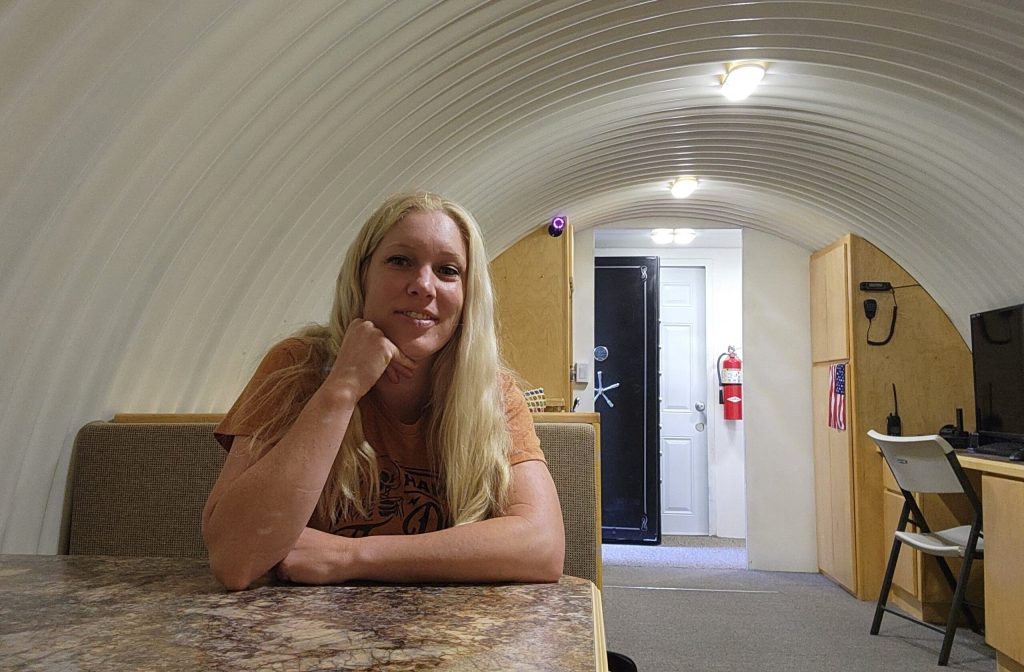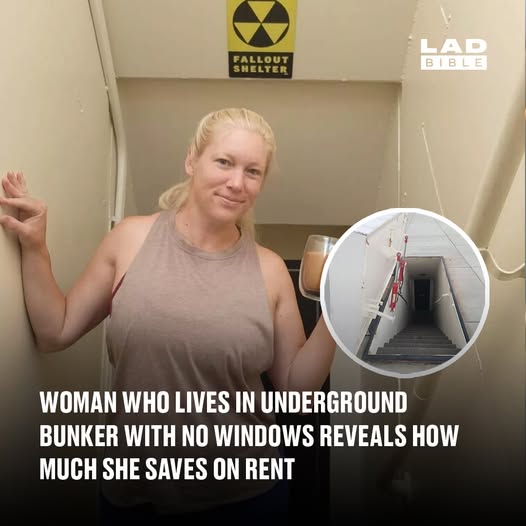44‑year‑old Caitlin Johnson, an entertainment professional, moved from New York to Bakersfield, California. She lives in a fully equipped 1,200‑sq‑ft underground bunker, renting it for just $500 per month. Find out more in the article below.
What Her Bunker Includes
Caitlin’s subterranean home resembles a regular apartment in amenities, despite being entirely windowless:
- Master suite complete with an en‑suite bathroom
- A kitchen, separate living room, additional bathrooms, and 18 bunk beds, reminiscent of its original multi‑occupant use
- Hydraulic doors (each about 10×4 ft) leading down 15 stairs to a blast‑proof entrance
- Reliable cell signal and internet, and zero utility bills, thanks to a well water source and solar power

A Deal Based on Trade‑Offs
Caitlin pays no utilities and saves roughly $1,500 every month compared to market rates. In return, she maintains the bunker and general property upkeep—a small trade‑off for her nomadic and flexible lifestyle. She emphasizes her job in entertainment requires mobility, making a fixed property purchase impractical. The bunker provides stability without long‑term commitment.
Adapting to Life Underground
Although devoid of natural sunlight, Caitlin has found ways to cope:
- Installed an artificial daylight lamp in her bedroom for rhythm regulation
- Keeps hydraulic doors open during the day to let ambient light descend
- Admits winter months are more challenging, but being out for most of the day helps make the darkness manageable
While she misses sunlight, she treasures the peaceful silence below ground and has improved sleep due to reduced distractions . She recounts sleeping 12 hours straight initially, until adjusting with gentle ambient noises .
Safety Perks & Lifestyle Reflections
Caitlin isn’t a doomsday prepper, but she finds ironic security benefits in the bunker—joking about riots, apocalypses, or even zombies. She stresses that her move reflects creative adaptation to soaring housing prices—part of a growing trend of unconventional solutions like tiny homes or ADUs.
The Drawbacks and Finite Plan
Despite the positives, Caitlin acknowledges it’s not structure for everyone:
- No natural windows—leading to potential disorientation
- The cold winter atmosphere without sunlight
- A need to downsize belongings, with many items in storage
Importantly, Caitlin views this as a temporary strategy—a way to save toward buying a home or condo when it’s the right moment . She has already secured another year’s stay with her friend
Final Takeaway
Caitlin Johnson’s choice to live in an underground bunker reveals a resourceful response to California’s rental crisis. By trading conventional comforts like natural light and a conventional address, she’s gained financial freedom, peace, and flexibility. Though not universally appealing, her story illustrates how unconventional homes—tiny houses, RVs, bunkers—are becoming real solutions for renters and aspiring homeowners navigating today’s difficult market. Her message is clear: with creativity and adaptability, it’s possible to live affordably and purposefully, even underground.

Conclusion: Rethinking Home in a Housing Crisis
Caitlin Johnson’s unconventional decision to live in a bunker may seem extreme, but it highlights the growing need for alternative housing solutions in an increasingly unaffordable market. By embracing a minimalist lifestyle and prioritizing financial stability over traditional comforts, she has found a way to thrive. Her story challenges conventional ideas of what “home” looks like and proves that with flexibility and creativity, it’s possible to live both economically and meaningfully—even beneath the surface.

















